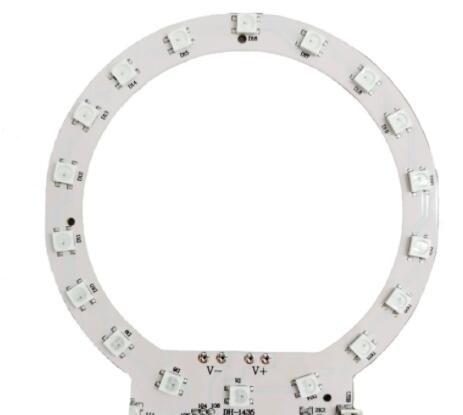The material used in the current PCB manufacturing process is metal-clad copper with excellent heat dissipation function. Generally speaking, we should note that single-layer LED PCB boards consist of three layers, namely the circuit layer, ceramic layer, and insulation layer.

LEDs are placed directly in the circuit layer where they are installed. The heat emitted from the LED is quickly connected to the substrate layer for heat dissipation, which is achieved through the insulation layer and then dissipated through the substrate layer. Copper, aluminum, and iron are the most commonly used thermal conductive layer materials, and iron cores are mostly used for high-end PCBs in motors with high heat dissipation. The LED is installed on the surface of the circuit layer, and the heat generated by the PCB during operation is quickly transferred to the metal substrate through the insulation layer. Then, this heat is transferred out through the metal substrate to achieve the purpose of device heat dissipation.
Type of LED PCB boards
1) Single-layer LED PCB board
This consists of a substrate layer and a conductive layer. The solder mask layer, along with screen printing, protects these layers. This type of LED PCB board does not have any circuit layers on the back, and its structure is very thin and weightless.
2) Double-layer LED PCB board
When compared with a single-layer PCB board, it was found that it has two copper layers, which makes it heavier because the number of conductive layers has also increased to two. Double-layer PCBs are very durable because this type of circuit layer can withstand the high current applied and has the best heat dissipation mechanism.
LED is the abbreviation for light-emitting diode, also known as semiconductor diode. LEDs are soldered onto printed circuit boards and equipped with a chip that generates light through electrical connections. A heat sink and a ceramic base are used to connect chips.
There are two types of circuit boards available for making LED fluorescent lamps, aluminum substrate and fiberglass board.
The structure of the aluminum substrate is divided into a circuit board layer, thermal insulation layer, and aluminum base layer.
1) Circuit board layer: Copper foil with strong current carrying capacity is mainly used as the circuit, and the price of copper is relatively high, so the thickness of copper foil directly affects the price of aluminum substrate.
2) Thermal insulation layer: The best thermal insulation effect is a special ceramic polymer.
3) Aluminum substrate: Generally, aluminum plate is used as a metal support component, and copper plate is also used for better thermal conductivity. The basic requirement for aluminum substrate is good thermal conductivity and not easy to bend.
4) Glass fiber board: There are several types of glass fiber board, which can be further divided into the following types: glass fiber board, single-sided copper foil glass fiber board, double-sided copper foil peeled fiberboard and perforated glass copper foil glass fiber board.
a: Single-sided copper foil fiberglass board: The copper foil of this board is usually laid on the side with a circuit to increase the heat dissipation area. The price of this board is slightly higher than that of fiberglass board.
b: Double-sided copper foil fiber stripping board: This type of board is coated with copper foil on both the front and back sides for heat dissipation, with slightly higher performance and price than single-sided copper foil board.
c: Perforated glass copper foil glass fiber board: This type of board is a relatively special structure, which is coated with copper foil on both sides of the front and back, and has many small holes on the board. The copper foil on both sides is directly connected, so that the copper foil on the front circuit board can be transmitted to the copper foil on the back through the small holes on the PCB board, and then transmitted to the heat-dissipation aluminum profile.
LED PCB boards have a wide range of application scenarios and market prospects due to their advantages such as high brightness, low power consumption, long lifespan, and flexibility.